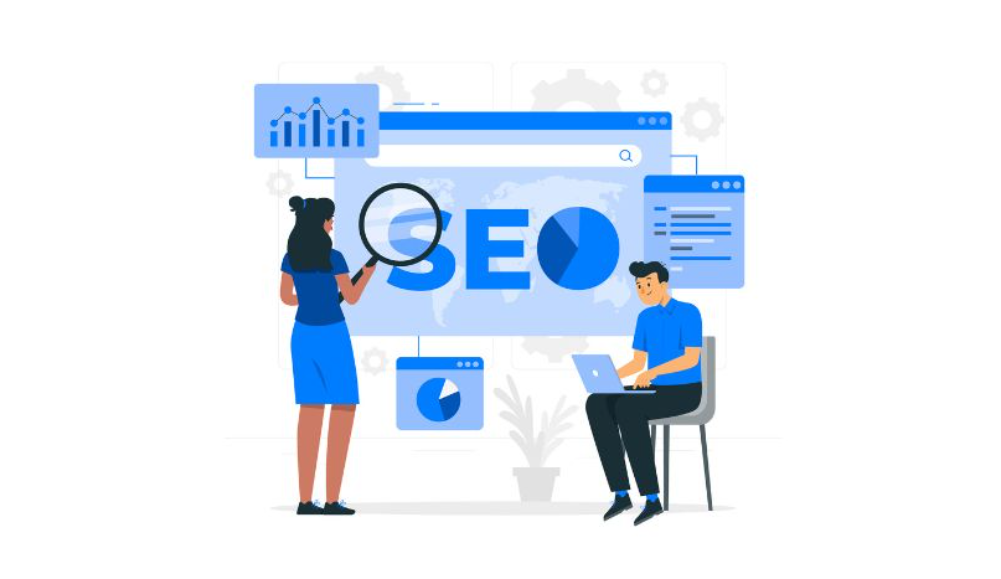As SEO reselling evolves in 2024, here’s what you need to watch for: The rise of white-label SEO services and their impact Key SEO trends that will shape your digital marketing strategy The increasing importance of technical SEO and on-page SEO practices How international SEO … Continue reading “SEO reselling in 2024: Emerging trends and what to expect”
13 common SEO mistakes you could be making right now
Whether you’ve heard of search engine optimization before or not, your website could already be making common SEO mistakes. Why does this matter? The more SEO mistakes you’re making, the less likely you’ll rank anywhere significant (or at all) on a search engine results page … Continue reading “13 common SEO mistakes you could be making right now”
How to earn passive income through digital marketing and SEO in 2024
At least 45 percent of people in the U.S. alone have a side hustle. And many want this job to be remote for their own comfort. That’s where the digital marketing and SEO industry might be a perfect fit for those looking to earn passive … Continue reading “How to earn passive income through digital marketing and SEO in 2024”
How rebranding and redesigning drive traffic surge in your marketing strategy
In today’s digital landscape, a company’s website serves as its digital storefront, often forming the first impression for potential customers. As such, the importance of a well-designed and strategically positioned website cannot be overstated. This is where the concepts of rebranding and redesigning come into … Continue reading “How rebranding and redesigning drive traffic surge in your marketing strategy”
7 strategies to grow quality backlinks and boost your SEO
Backlinks are a critical part of SEO strategy Quality backlinks, links that point from one website to another, are a critical part of SEO strategy. And any SEO expert will tell you building backlinks is very important to your overall SEO strategy. Organic traffic is … Continue reading “7 strategies to grow quality backlinks and boost your SEO”
SEO content optimization tips to increase online visibility
Every website owner wants to increase their online presence. No matter if their website is an eCommerce store, digital marketing platform, or a simple blog, having a great reach and receiving impressions is what they create content for. Successfully fulfilling this objective requires optimizing content, … Continue reading “SEO content optimization tips to increase online visibility”
8 steps to create an effective SEO strategy
The right SEO strategy helps you optimize for search engines so that your content gets seen by potential consumers. SEO stands for search engine optimization, and an SEO strategy refers to the process of planning and implementing steps to improve your organic search engine rankings. … Continue reading “8 steps to create an effective SEO strategy”
13 on-page SEO tips that you can use today
On-page SEO can help improve your website’s organic search traffic. And with Google implementing several search engine algorithm updates over the years, it’s more important than ever to audit where your on-page SEO stands and how you can best optimize it. Simply put, on-page SEO … Continue reading “13 on-page SEO tips that you can use today”
5 tips to get Google to display the right date in search results
A big factor in whether an internet user will click on your search result in Google is the publication date that’s shown. The more recent the content, the more appealing it is. Are you sure that your search results are showing the right dates? Google … Continue reading “5 tips to get Google to display the right date in search results”
4 tips to boost your click-through rate in Google Search
A lot of efforts to boost your SEO may focus on your overall search ranking for particular keywords that matter to your business. But what are you doing to optimize your Google Search click-through rate? Your search engine optimization should always keep your CTR in … Continue reading “4 tips to boost your click-through rate in Google Search”
How to use HARO to grow website backlinks and boost SEO
What is Help A Reporter Out (HARO)? HARO is a website that stands for Help A Reporter Out. It’s a service that connects journalists with a variety of sources but also gives you the opportunity to get useful media coverage for your business. How HARO … Continue reading “How to use HARO to grow website backlinks and boost SEO”
7 tips to improve your website’s domain authority
What is Domain Authority? Domain Authority (DA) is a search engine ranking score developed by Moz that predicts how likely a website is to rank in search engine result pages (SERPs). Many factors come together to make or break your search engine optimization (SEO), including … Continue reading “7 tips to improve your website’s domain authority”
12 SEO marketing tips for beginners
Search engine optimization, also referred to as SEO, is critical for every website, but it’s also achievable, even for beginners. SEO is all about ensuring that your website content ranks high in relevant search engine results. Of course, the higher you land in search rankings, … Continue reading “12 SEO marketing tips for beginners”
What are SEO stop words and should you worry about them?
In your efforts to optimize your website for search engines, you may have come across the concept of SEO stop words. But what are SEO stop words? How do they impact your SEO? And should you worry about them in your SEO strategy? What are … Continue reading “What are SEO stop words and should you worry about them?”
9 tips and tricks to boost your off-page SEO
Search engine optimization (SEO) is critical to a website’s organic traffic. But not all SEO is the same. There are different types of SEO, with on-page and off-page being the two categories in terms of tactics. Off-page SEO refers to all the things you can … Continue reading “9 tips and tricks to boost your off-page SEO”
7 tips to optimize for voice search and get ahead of the curve
While voice search may have begun as a novel concept, it definitely has a place in your SEO strategy now. Of course, voice search began with smartphone use but has grown to include both smart speakers and voice assistants. It involves what is commonly understood … Continue reading “7 tips to optimize for voice search and get ahead of the curve”
11 free SEO keyword research tools you should consider
Keyword research is an important element of any successful SEO strategy or pay-per-click campaign. The right keywords can help improve your ranking on search engine results pages (generating more organic traffic to your website) or attract the right visitors through your PPC efforts. But what’s … Continue reading “11 free SEO keyword research tools you should consider”
8 types of negative SEO you should know about
While the likelihood of negative SEO attacks on your website is rare, it’s important to understand what negative SEO is (and isn’t). Essentially, negative search engine optimization (SEO) is a collective term for tactics intended to lower a competitor’s search engine rankings. It’s also referred … Continue reading “8 types of negative SEO you should know about”
What’s the difference between on-page and off-page SEO?
If you’re just starting to dive into SEO, you might be surprised that there are both on-page and off-page types. Search engine optimization (SEO) is critical to help drive organic traffic to your website. Even more than that, with the right SEO, you should be … Continue reading “What’s the difference between on-page and off-page SEO?”



















